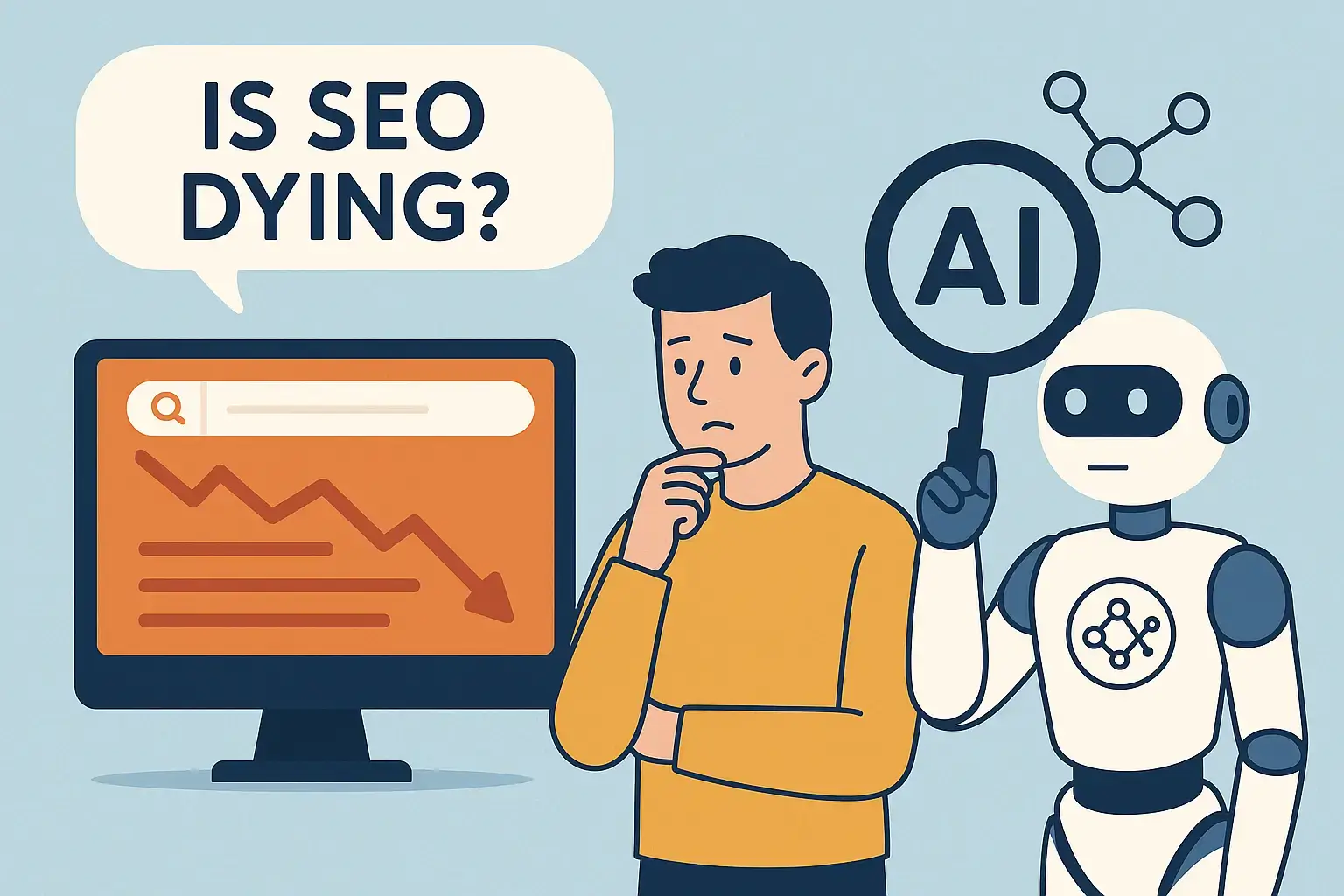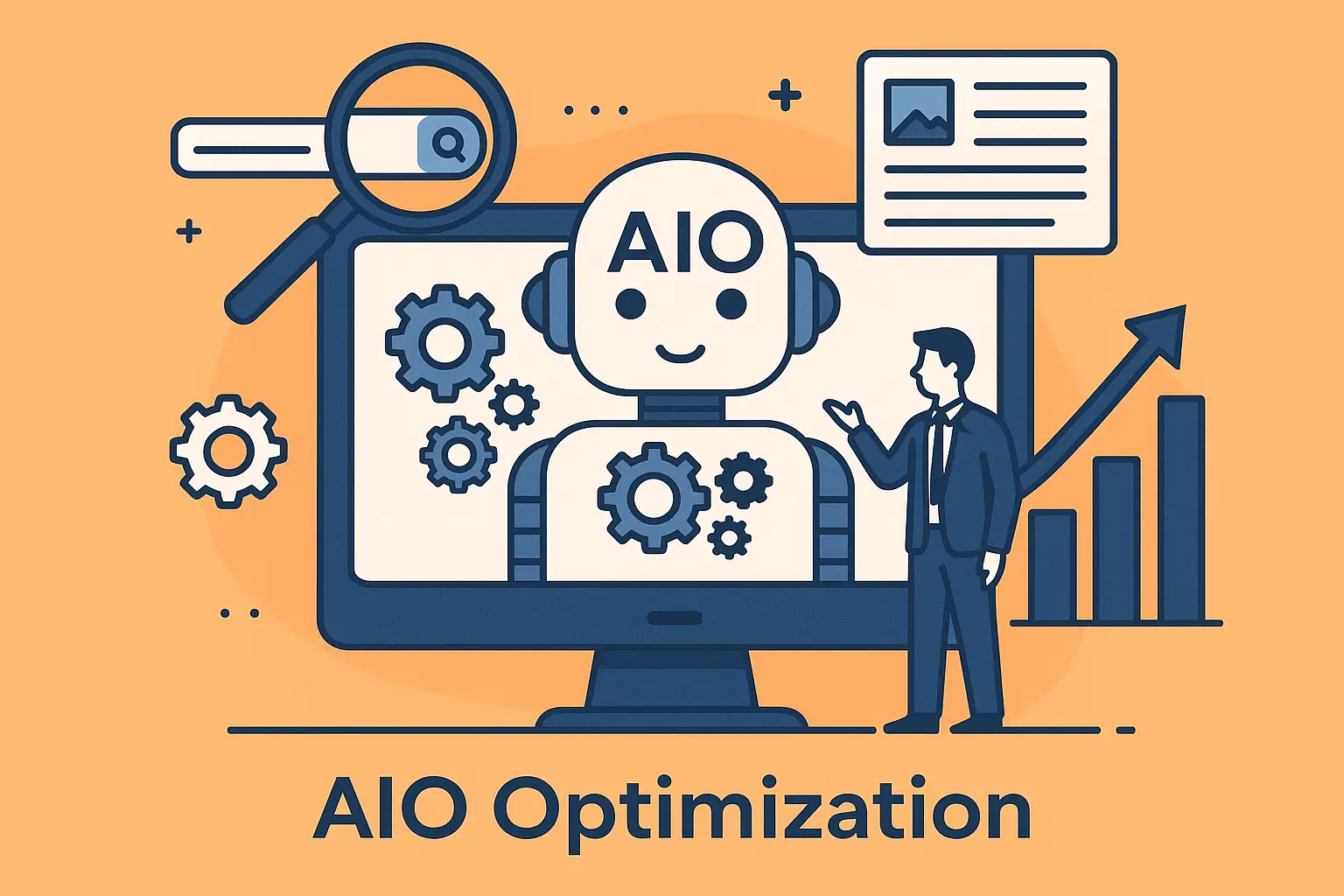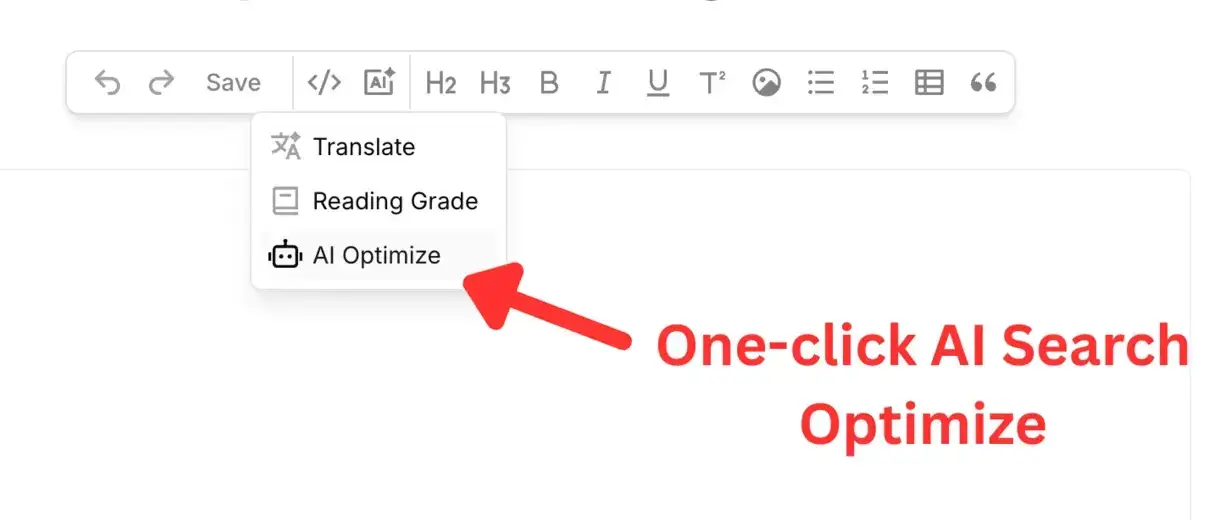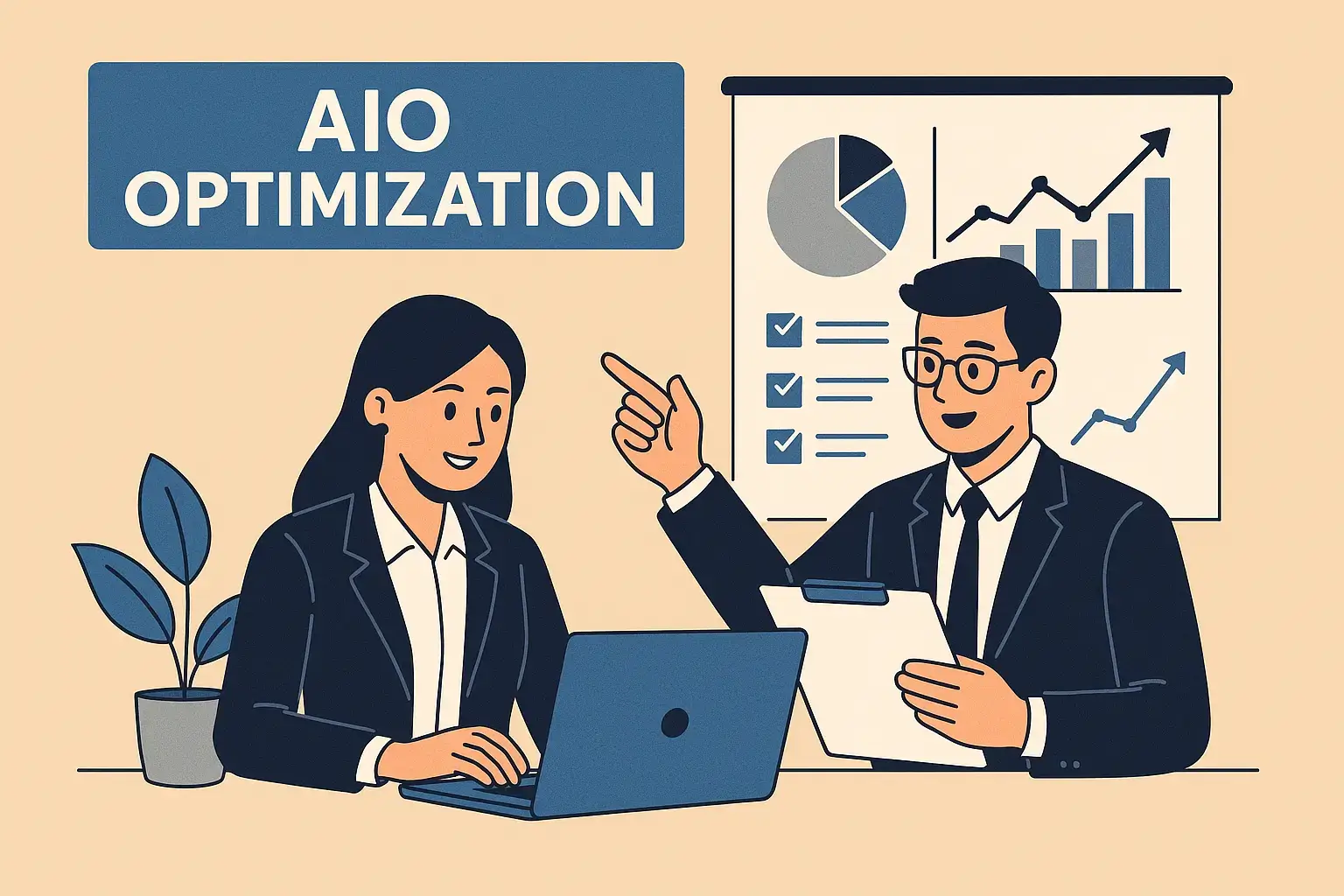Is SEO Dying Due to AI? How to Optimize for AI Search (AIO)

TL;DR: The future of SEO with AI is evolving rather than disappearing. The core principles of building authority and creating valuable content remain vital, but new strategies like optimizing for AI search (AIO) are essential. This involves providing clear summaries and FAQs to help AI understand and rank your content effectively, ensuring your website continues to attract traffic in an AI-driven search landscape.
Table of Contents
Is SEO Dead in 2025? Separating Hype from Reality
You’ve probably seen the headlines: “AI is killing SEO!” or “Say goodbye to traditional SEO!” And you know what? They're probably right.
More and more people are asking ChatGPT or Google Gemini directly. These AI bots are going to your website instead of real humans, which means less traffic and less sales. Recent studies show an estimated 60% drop in traffic from search due to AI.
But with great change comes great opportunity.
What if you could write blog posts optimized for AI search engines, thus getting you referral traffic from the chatbots themselves?
SEO Is Changing, Not Disappearing
Good news: the way you write blog posts will need to change, but not by much! The core practices of SEO remain the same: build a strong Pillar & Cluster strategy around your niche.
If your website is seen as an authority, AI search engines love you and will send traffic to you.
Beyond that, there are just a few simple things you need to add to your posts to optimize them for AI search (otherwise known as AIO or LLMO).
AIO: What It Is and How To Optimize

When someone asks ChatGPT a question and it searches the internet, there is a way to get it to scan YOUR website and answer based on YOUR blog post.
It may cite you as a resource, or even better refer your product as the one users should buy. In other words, it's possible to "rank" inside AI now.
But how?
How AI Search Works Under the Hood
When a user asks ChatGPT a question and it searches the internet, what it's really doing is grabbing snippets from the top sources from Bing (which they have special access to due to their partnership with Microsoft).
It hasn't been publicly posted how many, but we can assume they are scraping the top 10-20 results from Bing (or Google if using Gemini). From there, it stores the text from each site inside a database and runs a mini search through the text for relevancy to keywords the user originally asked ChatGPT.
This is a technique called retrieval-augmented generation, or RAG. Here at Video Blog AI we actually use the same technique to store your source materials, allowing you to generate blog posts based on the sources you upload.
I won't get into the nitty gritty technical details of RAG, but actually it's not that hard to optimize for AIO. In general you just need to do two simple things:
- Provide a clear one paragraph TL;DR just below the title.
- Create an FAQ section at the bottom of post covering common questions.
Tip: Use the "AI Optimize" feature inside the editing panel of Video Blog AI to automatically generate all the AI optimizations necessary for any article.
Step 1: Provide a Clear Summary Just Below the Title
Right at the beginning of your blog post, write the clearest, most direct answer to your blog post possible in one paragraph. In other words, create a TL;DR paragraph that's meant to be read by AI search.
You see, AI search has a very limited time before the user gets tired of waiting, so they really like it when you give them a direct answer. For an example, see the top of this very blog post (which is of course AI-optimized).
When you give them that TL;DR, the AI search engines love you for it and are much more likely to use you as a resource.
Step 2: Create an FAQ Section at the Bottom
A clearly labeled FAQ section, with direct questions and simplified 1-3 sentence answers is AIO gold.
Make sure you include the most common questions that users who land on your blog post would ask for. You can find these questions through a variety of tools, including asking AI, using Video Blog AI's built in editor, or even searching on google your target keywords and seeing the "People Also Ask" section for inspiration.
There are other small techniques for AIO that aren't covered here, but the general idea is to add clear answers to questions structured in a simple way.
How to Use Video Blog AI to Get AI Search Optimized Easily

Luckily, Video Blog AI makes it easy to AI search optimize any post. Here's how to do it:
- Create a Video Blog AI free account.
- Click "Create" > "Freeform Editor". This will open a blank editor.
- Click on the "</>" icon in the left-hand toolbar and paste in your blog post's HTML.
- Click on the "AI" button right next to the "</>" button and select "AI Optimize".
That's it! The AI will now do a detailed analysis of your blog post and add a TL;DR at the top of your post, and an FAQ section at the bottom that contains the most helpful questions to your readers. Once it's done, simply export the HTML and add it to your website.
AIO Optimization Tips and Best Practices

There's more subtle things you can do to improve AI search beyond the two biggest ones we already covered. AI search loves content that’s easy to navigate and rich in context. Here’s how to structure your pages:
- Use clear headings and subheadings with descriptive keywords to organize your content logically.
- Incorporate bullet points and numbered lists to make scanning effortless.
- Add schema markup to provide metadata about your content’s type, author, and purpose.
- Write concise summaries and FAQs to directly address common user queries.
- Ensure your content is well-linked internally and externally to build authority and context.
- Use multimedia elements like images and videos with descriptive alt text to enrich understanding.
By shifting your focus from traditional SEO tactics to these AIO strategies, you’ll be better equipped to thrive in the evolving AI-powered search landscape — keeping your traffic steady and your content front and center.
What mistakes should you avoid when optimizing for AI search?
Here’s where many stumble, but you can avoid these pitfalls:
- Don’t stuff keywords or write just for search engines. AI values user-focused content.
- Don’t skip structured data and technical SEO. AI relies on these signals to understand your site better.
- Avoid thin or low-quality content. AI tends to ignore content that doesn’t add real value.
- Don’t ignore user intent. Your content should answer real questions thoroughly.
- Be cautious with AI-generated content. Always review and add your unique touch to maintain accuracy and originality.
- Keep an eye on analytics. Use data to refine your strategy continuously.
Remember, AI isn’t here to replace SEO—it’s here to evolve it. With the right approach, you can turn these changes into opportunities to grow your site’s reach and impact. Keep learning, stay curious, and you’ll navigate this AI-SEO landscape like a pro!
Frequently Asked Questions (FAQ)
Is SEO really dying due to AI?
No, SEO is not dying; it is evolving. While AI changes how search engines operate, the fundamental principles of SEO, such as building authority and creating valuable content, remain important.
What is AIO and how can I optimize for it?
AIO stands for AI Optimization, which involves structuring your content to be easily understood by AI search engines. Key strategies include providing a clear summary below your title and adding an FAQ section to answer common questions.
How does AI search work under the hood?
AI search engines like ChatGPT use techniques such as retrieval-augmented generation (RAG), where they scrape top sources from search results, store snippets, and then retrieve relevant information to answer user queries.
What are some best practices for structuring content for AI understanding?
Use clear headings, descriptive keywords, bullet points, schema markup, concise summaries, internal and external links, and descriptive multimedia to make your content easy for AI to interpret.
What common mistakes should I avoid when optimizing for AI search?
Avoid keyword stuffing, low-quality content, ignoring user intent, and neglecting technical SEO. Focus on user-focused, valuable content and proper structuring to succeed in AI search.
